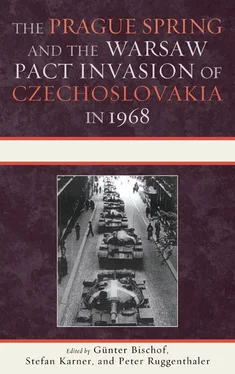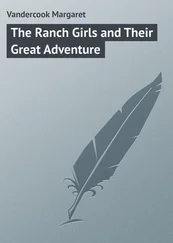In addition to all these materials from former East Bloc countries, many additional documents from the United States, West European countries, and the headquarters of the North Atlantic Treaty Organization (NATO) are also now available. Although some important Western (especially U.S.) records were available well before the Cold War ended, access to U.S., West European, and NATO documents has increased immensely since 1991. Huge collections from the U.S. State Department, National Security Council, Defense Department, and Central Intelligence Agency, including many items originally released through the Freedom of Information Act or Mandatory Review Requests, are available at the U.S. National Archives in College Park, Maryland, and the Lyndon Baines Johnson Library in Austin, Texas. Similar types of documents, albeit less numerous and with larger gaps, can be found in the national archives of most of the West European countries as well as at NATO’s main archive in Brussels. Although Western diplomatic and intelligence analyses of Soviet decision making during the 1968 crisis were imperfect at best (in this respect, the documents indirectly confirm that Western governments were unable to recruit sources anywhere near the highest levels of the Soviet regime), the Western documents provide vital information about the policies of the U.S. and West European governments and also contain some information about the Soviet and East European armed forces that is currently, and will for many years likely remain, unavailable from the Russian and other former East Bloc archives. A case in point is a September 1968 U.S. Army intelligence report offering a remarkably detailed overview of the Soviet Army’s use of electronic warfare (EW) and jamming during the invasion. 1No documents pertaining to EW or other sensitive operational matters have been released from the Russian Defense Ministry’s Main Archive.
This huge outpouring of new sources has greatly enriched earlier accounts of the Prague Spring and of the crisis that emerged between the hard-line Warsaw Pact countries (including the USSR) and Czechoslovakia. Previously unknown aspects of these events have now come to light, and countless important details have been filled in, as is evident in the many fine chapters of this book. Although the new sources do not drastically change our basic understanding of the Prague Spring (which was superbly analyzed in H. Gordon Skilling’s landmark book published in 1976, as well as in dozens of other books and many hundreds of articles), they do allow us to gain a much more nuanced and comprehensive sense of what went on in Czechoslovakia. 2More importantly, the new archival evidence permits a far more complete and accurate picture of Soviet decision making, interactions within the Warsaw Pact, and the events that led up to the August 1968 invasion. Although Karen Dawisha, in her 1984 book analyzing Soviet decision making vis-à-vis Czechoslovakia, did an admirable job on the basis of the exiguous information that was available as of the early 1980s, her book (not to mention other analyses that were less perceptive) has now been overtaken by the deluge of new archival evidence and firsthand testimony. 3No scholar writing about this subject can any longer hope to do a satisfactory job without taking account of the vast quantity of recently declassified documents, memoirs, and interviews from both East and West.
THE PRAGUE SPRING AND ITS RECEPTION IN MOSCOW
The new evidence underscores just how bold the changes in Czechoslovakia were, even in the face of relentless pressure from the Soviet Union and its hard-line Warsaw Pact allies (especially the GDR and Poland). Far-reaching reforms early in the Prague Spring, including the elimination of censorship, the emergence of unofficial political “clubs,” the removal of orthodox Communist officials, and the general effort to forge “socialism with a human face,” brought a sweeping revival of political and cultural life in a country that had long been one of the most repressive in the Soviet Bloc. As the reform program gained pace and public support grew, the Prague Spring took on a life of its own and gradually eluded the control of the KSČ. Traditional Marxist-Leninist institutions in Czechoslovakia were on the verge of being swept away.
Officials like Dubček remained loyal Communists, but their willingness to press ahead with wide-ranging political liberalization facilitated the emergence of more radical reformers within the party and the growing visibility of proponents of liberal democracy outside the KSČ. The new evidence confirms that senior Czechoslovak officials who were especially bold in supporting reforms, such as Ota Šik (a deputy prime minister), Jiří Pelikán (the head of state television), and even František Kriegel (a member of the KSČ Presidium), envisaged a greatly liberalized version of communism that would fundamentally depart from the standard Soviet model. Šik enunciated this new approach at a student rally in Prague in May 1968:
I believe that our peoples [Czechs and Slovaks], with their strong democratic traditions and their deep revulsion toward any political restrictions and oppression, can put into practice the kind of socialist democracy we have not seen anywhere else. We can create a model of socialist society that will become genuinely attractive for the working people of all capitalist countries and that will have a tremendous impact on the development of left-wing movements in Western countries. 4
In pledging to foster a liberal form of socialism that “we have not seen anywhere else,” Šik made clear that he did not regard the Soviet Union as an example worth following. His aim of creating a “socialist democracy” that would “become genuinely attractive for the working people of all capitalist countries” was an obvious acknowledgment that Soviet-style socialism was not “genuinely attractive for working people.”
Soviet leaders, as the new evidence shows, were unnerved by this sort of rhetoric and by the rise of influential political groups outside the KSČ. Officials in Moscow worried that even if Dubček did not intend to push in a radical direction, the outspoken proponents of liberal democratic reform in Czechoslovakia would increasingly eclipse him and steer the country along an “antisocialist” path. Such a development, they feared, would, if left unchecked, create an ominous precedent for the rest of the Soviet Bloc. Although the process of political, economic, and cultural revitalization in Czechoslovakia in 1968 was peaceful throughout, the lack of any violent turmoil did not prevent Soviet leaders from repeatedly drawing analogies to an event they had collectively experienced twelve years earlier—the violent rebellion in Hungary in October–November 1956, which was eventually subdued by the Soviet Army. As early as 15 March 1968, at a meeting of the CPSU Politburo, the head of the Soviet state security committee (KGB), Yuri Andropov, who had served as Soviet ambassador in Budapest during the 1956 revolution, claimed that events in Czechoslovakia “are very reminiscent of what happened in Hungary.” 5The CPSU general secretary, Leonid Brezhnev, who in 1956 had taken part in all the high-level discussions that led to the Soviet invasion of Hungary, concurred with Andropov’s assessment, adding that “our earlier hopes for Dubček have not been borne out.” Brezhnev phoned Dubček during a break in the CPSU Politburo’s deliberations and emphasized his “grave concern” about the situation in Czechoslovakia, especially the “growth of patently antisocialist forces.” The Soviet leader warned Dubček that “the Hungarian events of 1956 might soon be repeated in [Czechoslovakia],” but, to Brezhnev’s disappointment in subsequent weeks, the phone call did not spur Dubček to rein in the Prague Spring. 6
Читать дальше












